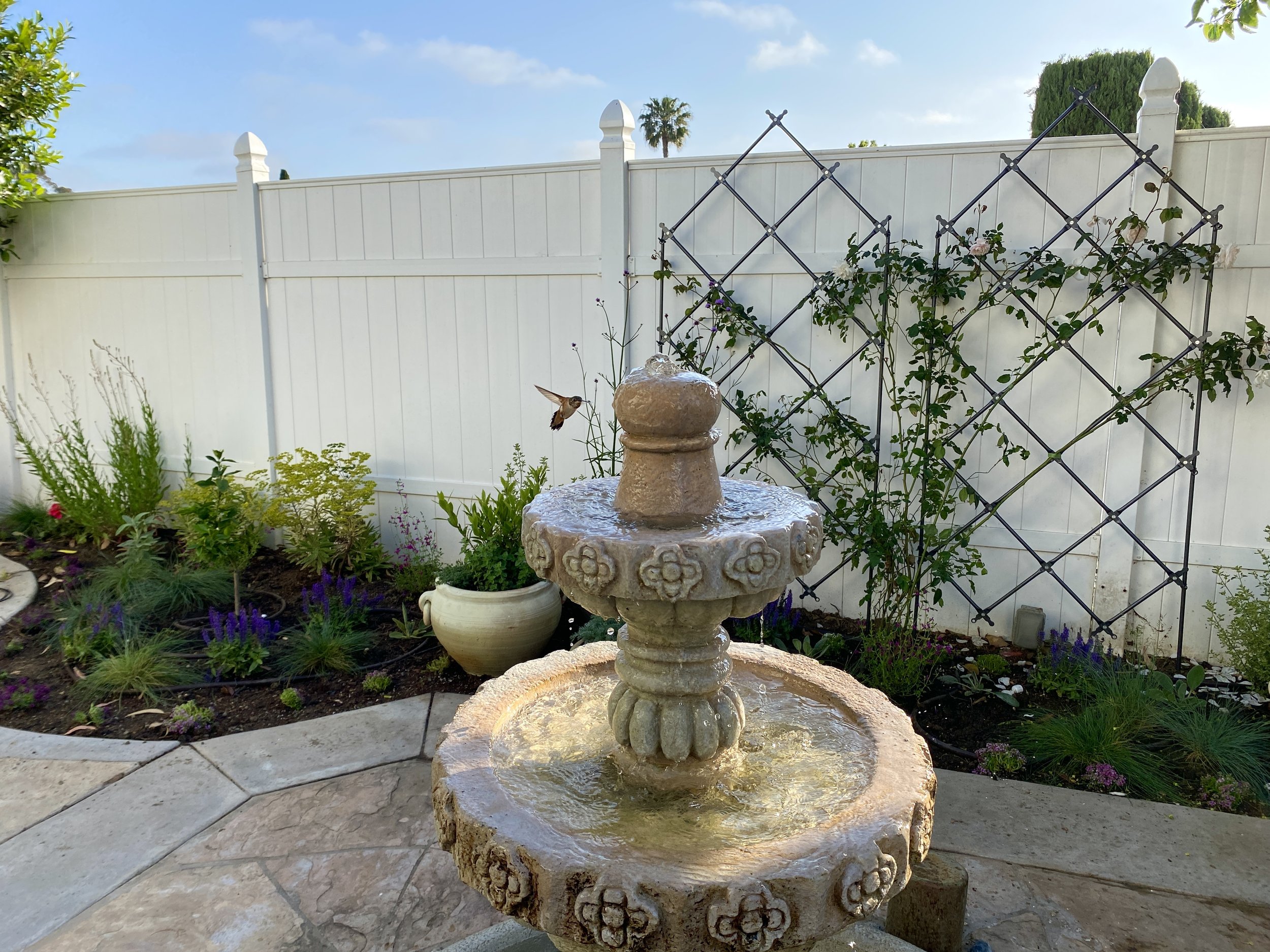Ideas for creating a Sustainable garden
Ideas for Fall
To create a more sustainable garden
Creating a sustainable garden in California is something every homeowner can do to make a difference. It is a wonderful way to conserve resources and support local ecosystems.
Here are 25 tips for designing a sustainable garden in California:
1. Choose Native Plants: Opt for California native plants as they are adapted to the local climate and require less water.
2. Drought-Tolerant Landscaping: Incorporate drought-tolerant plants, succulents, and xeriscaping principles to reduce water usage. We use plants from other dry climate that bloom at different times, such as Australian plants that think it’s winter in our summer.
3. Mulch Beds: Apply organic mulch to retain moisture, suppress weeds, and regulate soil temperature.
4. Efficient Irrigation: Install an efficient irrigation system, reducing water waste. Native plants hate drip, but we can install other types of emitters for California native plants that water more naturally.
5. Rain Barrels: Collect rainwater to use for watering your garden during dry periods.
6. Smart Controller: Use a smart irrigation controller that adjusts watering schedules based on local weather conditions.
7. Group Plants by Water Needs: Group plants with similar water requirements together to avoid overwatering some areas.
8. Rain Gardens: Create rain gardens to capture and filter rainwater, reducing runoff and replenishing groundwater.
9. Compost: Start a compost bin to recycle organic waste into nutrient-rich compost for your garden.
10. Organic Gardening: Avoid chemical pesticides and fertilizers, and instead use organic alternatives.
11. Integrated Pest Management (IPM): Employ IPM techniques to manage pests without harming beneficial insects.
12. Native Bee-Friendly: Plant native wildflowers to support local bee populations.
13. Butterfly Host Plants: Include host plants for caterpillars, like milkweed for monarchs, to attract butterflies.
14. Bird-Friendly Habitat: Provide birdhouses, feeders, and birdbaths to attract and support local bird species.
15. Habitat for Pollinators: Create a diverse garden with a variety of flowering plants to attract bees, butterflies, and hummingbirds.
16. Diverse Plant Selection: Incorporate a mix of plant species to enhance biodiversity in your garden. The more the merrier!
17. Reduce Lawn Size: Consider reducing the size of your lawn and replacing it with native plants and ground covers.
18. Plant Trees: Shade from trees can reduce cooling costs and create a comfortable outdoor space.
19. Capture Greywater: Install a greywater system to reuse water from sinks and showers for irrigation.
20. Choose Low-Maintenance Plants: Select plants that require less pruning and maintenance.
21. Attract Beneficial Insects: Plant herbs and flowers that attract ladybugs, lacewings, and other beneficial insects.
22. Soil Health: Improve soil health with compost and organic matter to enhance water retention.
23. Plant for Shade: Plant shade trees strategically to reduce the need for air conditioning.
24. Permeable Surfaces: Use permeable pavers or gravel for paths and driveways to reduce runoff.
25. Harvest Edibles: Grow your own fruits and vegetables to reduce your carbon footprint.
By following these sustainable gardening tips in California, you can create a beautiful garden while conserving resources and supporting the local environment. These are the principles we follow here at Sweetgrass Gardens. We can help you design a sustainable garden from scratch or help implement just a few of these ideas to get started.

